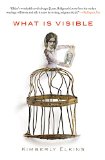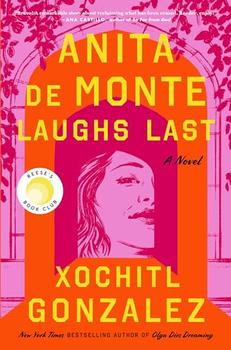Summary | Excerpt | Reviews | Beyond the Book | Read-Alikes | Genres & Themes | Author Bio

Critics' Opinion:
Readers' Opinion:
First Published:
Jun 2014, 320 pages
Paperback:
Jun 2015, 320 pages
 Book Reviewed by:
Book Reviewed by:
Rebecca Foster
Buy This Book
This article relates to What Is Visible
Deafblindness is either congenital (present from birth) or acquired later in life. It can be attributed to many causes including rubella, glaucoma, cataracts, diabetic retinopathy, and premature birth. Deafblindness is not one monolithic condition; it varies in severity or completeness: some people maintain limited use of one or both senses. Both Laura Bridgman (the subject of Kimberly Elkins's What Is Visible) and Helen Keller could see and hear until the age of two, when severe illness struck.
There are many ways of communicating with the deafblind. For those with residual hearing, clear speaking or hearing aids can make a difference. For those with limited sight, lipreading, large print writing, or sign language performed in their visual range may be sufficient. People with more profound vision and hearing loss can benefit from a range of communication tools. Non-verbal communication includes body movement, breathing changes, and associating certain objects and activities (such as a fork with eating or a towel with swimming) and then leading a person to the desired object. The deafblind also rely on some or all of the following means of communication:
When approaching a deaf-blind person, one should gently touch his or her hand to gain attention. Kerry Wadman works for the Ontario Advocacy Commission for those with disabilities. Deaf-blind himself, he is the deaf-blind Program Associate Manager for the Canadian National Institute for the Blind, and drew up a list of "Ten Commandments" for interacting with the deafblind: "Thou shalt not lose hand contact when communicating with a Deaf-blind person" and, most important, "Thou verily shalt view Deaf-blind people as unique and not antique couch potatoes." Elkins, the author of What is Visible, would certainly agree.
Before she came to Perkins School, Laura used her own rudimentary sign language. Her family could only communicate with her by pushing or pulling her where they wanted her to go, and patting her head or back to signify praise or disapproval, respectively. Dr. Samuel Howe initially taught Laura the English language by labeling objects with a name in raised letters. She learned to match the objects with their name labels, and eventually was able to identify individual letters from the cut-up labels and put them back in order to form words. This was the mark of a true understanding of language. In addition to finger spelling, Laura read Braille and could communicate with the public by writing on a slate. These three methods are all on display in What Is Visible.
For a related exploration about sign language and deaf culture, read the Beyond the Book for Hands of My Father.
Filed under Medicine, Science and Tech
![]() This "beyond the book article" relates to What Is Visible. It originally ran in June 2014 and has been updated for the
June 2015 paperback edition.
Go to magazine.
This "beyond the book article" relates to What Is Visible. It originally ran in June 2014 and has been updated for the
June 2015 paperback edition.
Go to magazine.




Your guide toexceptional books
BookBrowse seeks out and recommends the best in contemporary fiction and nonfiction—books that not only engage and entertain but also deepen our understanding of ourselves and the world around us.